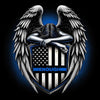Meaning of some symbols in the US Police and Military flags you probably didn’t know about.
If you’re a US citizen, you may not find it necessary to concern yourself with the symbols on the Police and Military flags as they may seem quite irrelevant. However, it doesn’t hurt to know what some symbols in the US Police and Military flags stand for.
While this might not be something you’ll be normally interested in, we promise that you’ll find this article quite fun and engaging.
Okay, enough talking, let’s delve into the business of the day.
Flags of the U.S. Armed Forces: Symbols and Meanings
Military flags are a stunning reminder of the United States' vibrant past, and each branch of the armed services has its own distinct flag. Each flag contains symbols representing strength, power, and the trials and tribulations endured by the men and women who fight to protect our country. They are proudly displayed on ships, bases, camps, academies, and at special occasions.
Armed Forces Symbols
Numerous military emblems appear on the majority of military flags. These US military symbols, each intended to represent a distinct aspect of military culture, are relatively universal, and each forms a component of the individual military branch "logos."
Eagle
He has always been a component of the military, as he is intended to signify strength and might. The American bald eagle symbolizes something so ingrained in American culture that his absence from our military flags would be quite noticeable.
Fouled Anchor
Each military branch's hardships and tribulations are symbolized by a chain-wrapped or fouled anchor. The fouled anchor appears on a variety of military flags as a symbol of unity, service, and navigation.
Statements and Words
While not specifically military symbols of the United States, specific words were carefully chosen to identify each branch and what it stands for on Military flags.
Marine Corps Flag
The Marine Corps flag is scarlet in color and features a globe intersected by a grey and gold fouled anchor. The American bald eagle perches atop the globe, his beak adorned with the Latin inscription "Semper Fidelis." A scroll with the words United States Marine Corps appears beneath the image.
Components of the insignia are thought to have originated as military emblems or decorations worn by the Continental Marines as early as 1776. They signify pride, dignity, integrity, bravery, and tradition when combined. Since 1939, the Marine Corps has flown the present design of the flag.
The US Navy's seal represents both shore support and amphibious striking capabilities. The Navy Flag is centered on a bald eagle with outspread wings atop an anchor defending a ship at sea.
Since 1951, this seal has been in use and was included into the Navy flag in 1953. A round rope surrounds the seal, and beneath it is a yellow scroll carrying the words United States Navy. Notably, the official Navy Flag is not permitted to be flown from any vessel. It is exclusively flown at naval-affiliated parades, ceremonies, and formal public events.
What does the thin blue line flag in the US Police flag mean?
While police and supporters of law enforcement have embraced the picture as a source of pride, others view it as a symbol of resistance. What began as a word, was popularized as a graphic picture, and was finally unfurled as a thin blue line flag, has existed for a lengthy period of time.
On police cars, lapel buttons, coffee mugs, and COVID-19 masks, the faint blue line is visible. The narrow blue line flag has only lately generated criticism.
While some police officers and allies of law enforcement have embraced the picture as a source of pride and fraternal brotherhood, others view the thin blue line flag as a symbol of resistance during a time of calls for police reform.
1. What does the thin blue line mean?
The tale of the thin blue line is the most trustworthy source for the genesis of the thin blue line. During the Crimean War, a red-coated Scottish regiment of the British Army stood valiantly against successive Russian onslaught. This 1854 war effort, most notably linked with Alfred, Lord Tennyson's poem "Charge of the Light Brigade," was dubbed the "thin red line" by the British press. The concept of a line of valiant defenders standing between peace and turmoil was appropriated by law enforcement, whose generally blue uniforms reflected true blue loyalty and tenacity.
2. What is the thin blue line flag
The incorporation of the blue line symbolism into a flag is credited to Thin Blue Line USA, a firm founded in 2014 by then-college student Andrew Jacob to demonstrate his support for police enforcement. The thin blue line flag depicts the American flag in black and white, with the horizontal stripe underneath the field of white stars on a black backdrop. The stars symbolize the citizenry's commitment to justice and order. The darkness symbolizes anarchy and, according to others, is a monument to law enforcement personnel who have died in the line of duty.
3. Where is the thin blue line flag flown or displayed?
The thin blue line flag can be flown alone or in conjunction with the American flag, which must always take precedence. The thin blue line flag embodies all of the principles of liberty and justice. It is not coded in any way and is frequently altered for clothes design and other display goods.
4. Are citizens permitted to fly the thin blue line flag in support of police?
The narrow blue line on the flag symbolizes the principles of justice and liberty, courage and cooperation. Although it is significant for police officers' brotherly emotions for others in the profession, it is not exclusive to police officers.
Citizens, as depicted by the field of stars, are fundamental to the flag's message. Those who wish to demonstrate their support for police personnel and their collaboration in the law enforcement mission are welcome to fly the thin blue line flag.
Regrettably, the thin blue line has been incorrectly associated with police brutality and bigotry. Individuals who exhibit the blue line symbolism through a flag or decal have been subjected to verbal abuse and vandalism. Certain Homeowners Associations have expressed opposition to the flags, and several police departments have removed them from patrol cars, station buildings, and uniforms.
However, Jacob, the designer of the flag, maintains that such criticism is completely unjustified. “The flag has no resemblance to racism, hate, or bigotry,” he stated. “It is a flag to demonstrate support for law enforcement—there is no political component.”
Indeed, his business has categorically denied its usage during the Charlottesville riots.
While it is true that the flag's design coincided with the emergence of the Black Lives Matter movement, Jacob maintains that the flag was not a direct response. However, the flag is frequently connected with the Back the Blue and Blue Lives Matter campaigns.
Where can I get a thin blue line flag?
On the Police Brand website, thin blue line flags and other goods are readily accessible online. Numerous goods are trademarked or otherwise protected, despite widespread imitation. Since before recorded history, flags and symbols have been a part of families, trades, soldiers, and nations. Other emergency personnel have chosen similar colors and symbols.
Firefighting's Maltese cross and EMS's star of life are both examples. For police officers, the badge and uniform are required accoutrements of their profession, with the thin blue line emblems being a more recent addition that can be shared by any citizen who values the fine line between peace and chaos.




